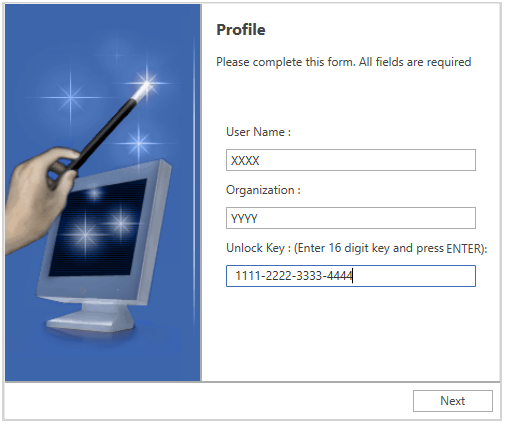
The WPF Wizard control provides an interface to create a multi-step wizard that guides users to complete a specific process such as installation or updates. It supports moving to the next and previous dialogs interactively.
Provides powerful data binding support to display headers and content in wizard pages. Design your application using the MVVM pattern to bind selected items.

Provides different templates for wizard pages with unique sets of features. The templates allow aligning the banner text and images in different orientations relative to the content area.

The WPF Wizard control provides rich navigation capabilities with embedded navigation buttons. It allows users to navigate back and forth between pages and disable navigation altogether. It also allows users to write their own navigation logic for navigating from a wizard page to different pages based on specific criteria.

Provides support for customizing the wizard pages and allows changing the available navigation buttons.

Provides a rich set of built-in themes inspired by popular interfaces such as Microsoft Office, Expression Blend, and Metro.

The WPF Wizard control supports localization to translate static text in the navigation buttons to any desired language.

Supports right-to-left (RTL) direction for users working with right-to-left languages like Hebrew, Arabic, or Persian.

Easily get started with the WPF Wizard Control using a few simple lines of XAML and C# code example as demonstrated below. Also explore our WPF Wizard Control Example that shows you how to render and configure the Wizard Control in WPF.
- <syncfusion:WizardControl Name="wizardControl">
- <syncfusion:WizardPage Name="wizardPage1"/>
- <syncfusion:WizardPage Name="wizardPage2"/>
- <syncfusion:WizardPage Name="wizardPage3"/>
- </syncfusion:WizardControl>
- WizardControl wizardControl = new WizardControl();
- WizardPage wizardPage1 = new WizardPage();
- WizardPage wizardPage2 = new WizardPage();
- WizardPage wizardPage3 = new WizardPage();
- wizardControl.Items.Add(wizardPage1);
- wizardControl.Items.Add(wizardPage2);
- wizardControl.Items.Add(wizardPage3);
- this.Content = wizardControl;
The Syncfusion WPF Wizard Control provides the following:
No, this is a commercial product and requires a paid license. However, a free community license is also available for companies and individuals whose organizations have less than $1 million USD in annual gross revenue, 5 or fewer developers, and 10 or fewer total employees.
A good place to start would be our comprehensive getting started documentation.
 Documentation
Documentation
Greatness—it’s one thing to say you have it, but it means more when others recognize it. Syncfusion® is proud to hold the following industry awards.